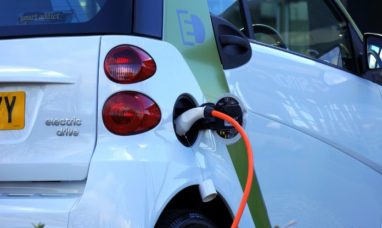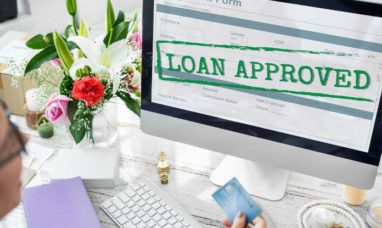The U.S. Small Business Administration supports (and in some cases funds) the 504 loans, 7(a) loans, SBA microloans, and Community Advantage loans that entrepreneurs can use to get start-up money through an SBA loan.
Since you don’t yet have a track record of success, startups are a risky bet for lenders, and SBA loans are expensive. Your chances of success will increase if you focus on the appropriate SBA loan program.
The SBA 7(a) and 504 loan programs usually require a business to have been running for at least two years and to have strong financials (a FICO score of 690 or above).
On the other hand, SBA microloans and Community Advantage loans are intended for genuine startups. Both programs are open to new companies and designed to help entrepreneurs with poor credit (a FICO score of 629 or lower) and low income.
Top SBA Loans for Entrepreneurs
SBA microloans
Maximum amount: $50,000
Optimal for: Launching a business
It can be used for: Supplies, inventories, working capital, items for fixtures or furniture, machinery, and equipment
The SBA microloan program, which is specifically designed for startups, offers loans of up to $50,000 to support the launch or expansion of your business. Eight years is the longest possible term.
A network of locally based lenders that manage the SBA microloan program can set their interest rates and eligibility standards. However, small business owners with bad credit or low incomes may be eligible because of the lenient requirements compared to other SBA loans.
SBA Community Advantage loans
Maximum amount: $350,000
Optimal for: Launching a business
It can be used for: Customary business uses, including working capital and inventory.
Startups in underserved communities are eligible for SBA Community Advantage loans. Most borrowers have been in operation for less than three years and do not qualify for funding from other sources. Community Advantage loans are an excellent choice for start-up businesses because they do not consider collateral or profits when making decisions.
The maximum loan amount is $350,000, and working capital loans have a 10- or 25-year maturity period (real estate)—lenders with a community focus and a specific mission offer SBA Community Advantage loans.
SBA 7(a) loans
Maximum amount: $5 million.
Optimal for: Expanding your company
It can be used for: Real estate, supplies, machinery, and working capital
Several different loan types are included in the SBA 7(a) loan program, each with its terms and limits. With an SBA Express loan, you can borrow up to $500,000, while a standard 7(a) loan allows you to borrow up to $5 million.
The most common and competitive type of SBA loan is the 7(a) loan. Typically, you need to have a personal credit score of at least 690 or be able to demonstrate several years of yearly income. Most 7(a) borrowers have been in operation for more than two years.
SBA 504 loans
Maximum amount: $5 million.
Optimal for: Expanding your company
It can be used for: Major business purchases or improvements such as real estate, machinery, and other
To “promote business growth and job creation,” startups can use an SBA 504 loan to pay for large equipment purchases or facility upgrades. Depending on the loan, you may be able to borrow up to $5 million with a term of 10 or 20 years (some projects may be eligible for up to $5.5 million).
For many startups, the requirement that small-business owners contribute 10% of the loan (or up to 20% in some cases) is a significant barrier to overcome. A Certified Development Company and a bank or credit union jointly fund each SBA 504 loan.
How to Get an SBA Loan for Startup
1. Determine the startup costs. You can’t apply for a startup business loan if you don’t know how much you need to borrow. Include one-time costs like permits, licenses, and equipment purchases, along with ongoing costs like inventory, rent, and payroll for at least the first year. This will provide you with a practical idea of how much cash you’ll need to launch your company.
2. Create a business plan. A strong business plan demonstrates to financiers that you have considered factors such as your target market, pricing structure, marketing expenses, potential difficulties, and industry competition. Include projected income, a breakdown of your startup costs, and a detailed funding request. The objective is to convince lenders that your company will succeed, particularly if you don’t have several years’ worth of financial records to rely on.
3. Pick a lender and a loan. Find a participating lender after deciding which SBA startup loan option makes sense for your company.
To locate a bank, credit union, or community-based lender that participates in the loan program of your choice, use the SBA’s Lender Match tool. Though the SBA backs the loan, the lender is ultimately responsible for processing your application and deciding whether to approve it.
4. Complete and submit your loan application. Your SBA startup loan application’s supporting documentation requirements will vary depending on the loan program and lender.
You’ll probably need to submit the following paperwork in addition to your business plan and loan application:
-
-
- Personal tax returns.
- Cash flow forecasts.
- List of collateral.
- Purchase agreements, quotes, or contracts.
-
You must also present business financials, such as business tax returns, if your company is already operational, as well as:
-
-
- Income statement and balance sheet.
- Business permits and licenses.
- A list of the company’s current assets.
-
Depending on the type of loan, the whole process, from filling out the application to getting the money in your bank account, can take anywhere from 30 to 90 days.
Featured Image: Pexels © Mikhail Nilov







